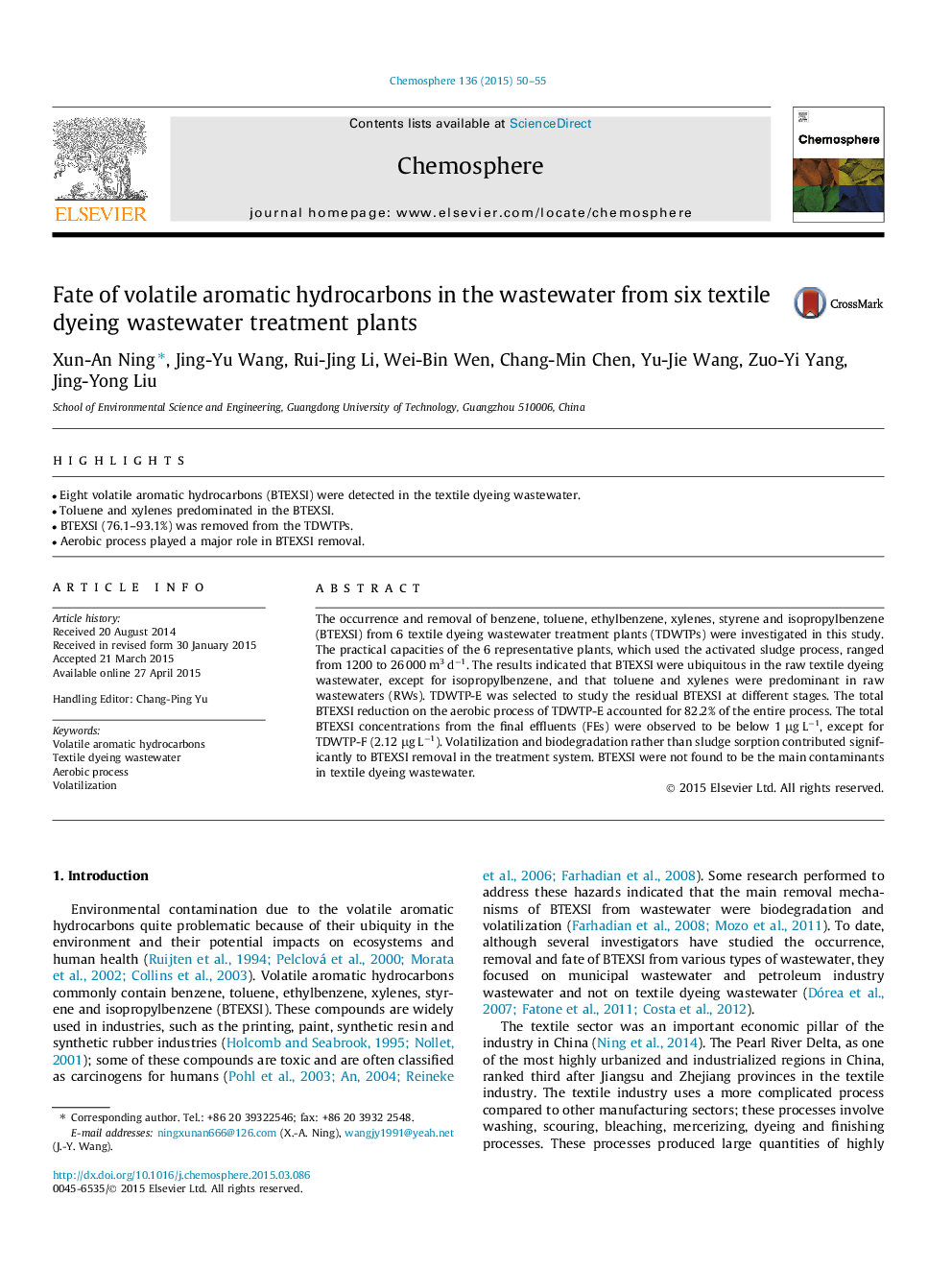| Article ID | Journal | Published Year | Pages | File Type |
|---|---|---|---|---|
| 4408255 | Chemosphere | 2015 | 6 Pages |
•Eight volatile aromatic hydrocarbons (BTEXSI) were detected in the textile dyeing wastewater.•Toluene and xylenes predominated in the BTEXSI.•BTEXSI (76.1–93.1%) was removed from the TDWTPs.•Aerobic process played a major role in BTEXSI removal.
The occurrence and removal of benzene, toluene, ethylbenzene, xylenes, styrene and isopropylbenzene (BTEXSI) from 6 textile dyeing wastewater treatment plants (TDWTPs) were investigated in this study. The practical capacities of the 6 representative plants, which used the activated sludge process, ranged from 1200 to 26 000 m3 d−1. The results indicated that BTEXSI were ubiquitous in the raw textile dyeing wastewater, except for isopropylbenzene, and that toluene and xylenes were predominant in raw wastewaters (RWs). TDWTP-E was selected to study the residual BTEXSI at different stages. The total BTEXSI reduction on the aerobic process of TDWTP-E accounted for 82.2% of the entire process. The total BTEXSI concentrations from the final effluents (FEs) were observed to be below 1 μg L−1, except for TDWTP-F (2.12 μg L−1). Volatilization and biodegradation rather than sludge sorption contributed significantly to BTEXSI removal in the treatment system. BTEXSI were not found to be the main contaminants in textile dyeing wastewater.
